2000
XP
®
Personal Computer
Reference Manual
Model No. CF-72 Series
Contents
Read Me First ...................................................... 2
Key Combinations .............................................. 3
LED Indicators .................................................... 4
Touch Pad (Advanced) .................................................. 5
Touchscreen*.................................................... 11
Panasonic Hand Writing.................................. 14
Standby/Hibernation Functions ..................... 16
Security Measures........................................... 20
Computing on the Road .................................. 25
Battery Power .................................................. 27
Multimedia Pocket ........................................... 33
CD Drive ........................................................... 36
PC Cards .......................................................... 39
RAM Module..................................................... 41
Port Replicator................................................. 42
Printer ............................................................... 43
External Display .............................................. 44
USB Devices .................................................... 46
Infrared Data Communications ...................... 47
Modem .............................................................. 49
LAN ................................................................... 51
Hard Disk Drive ................................................ 53
Setup Utility ..................................................... 54
Technical Information ..................................... 59
DMI Viewer ....................................................... 60
List of Error Codes .......................................... 61
Dealing with Problems (Advanced) ....................... 63
* Only for models with touchscreen
When the cursor is moved to an item under [Contents] or to
change to
Reference Manual will be displayed.
page (green display), the shape of the cursor will
. Under this condition, if characters are tapped (or a click is made), the corresponding page in the
We recommend that this Reference Manual be printed.
�
Read Me First
2
If the user has logged on without the administrator authority, some functions may not be executable, and some screens
may be not displayed as shown in this manual. If this happens, log on with administrator authority to enable these
functions.
This manual covers two types of models, as distinguished by the type of LCD screen (models with touchscreen and
models without touchscreen).
Confirm the latest information on optional products in catalogs, etc.
Terminology used in this Reference Manual
The following terminology is used in this Reference Manual particularly when notes are
not used.
Circular media such as DVD-ROM and CD-ROM are described as “discs”.
(With the Setup Utility, these media are described as “CD”).
The following drives are described as “CD drive”.
CD-ROM drive, DVD-ROM drive, CD-R/RW drive, DVD-ROM & CD-R/RW drive
Illustrations used in this Reference Manual
NOTE:
CAUTION:
WARNING:
[Start] - [Run]:
Enter :
Fn + F5 :
NOTE provides a useful fact or helpful information.
CAUTION indicates a condition that may result in minor or moder-
ate injury.
WARNING indicates a hazard that may result in moderate or seri-
ous injury.
This illustration means to click [Start], then to click [Run].
For some applications, you may need to double-click.
This illustration means to press the [Enter] key.
This illustration means to press and hold the [Fn] key, then press
the [F5] key.
Windows 2000 :
Information for Microsoft Windows® 2000 Professional users.
Windows XP :
Information for Microsoft Windows® XP Professional users.
page:
:
When the cursor is moved to an item under [Contents] or to
page (green display), the shape of the cursor will change to
.
Under this condition, if characters are tapped (or a click is made),
the corresponding page in the Reference Manual will be displayed.
This illustration means to refer to the Operating Instructions or
Supplementary Instructions.
Windows 2000 screens are used in this manual when no specific operating system
notes are required.
Some of the illustrations in this manual may differ slightly in shape from the actual
items in order to make the explanation easier to understand.
�
Key Combinations
3
CAUTION
Do not press the following key combinations repeatedly in (quick) succession.
Do not press the following key combinations while using the touch pad (mouse), touchscreen (only for models with
touchscreen) or other keys.
NOTE
Windows XP
When switching to a different user with the Fast User Switching function, these key operations may not work. In this case,
log on with the administrator authority again, not using the Fast User Switching function, and try the operation once more.
Key
Fn + F1
Fn + F2
Functions
LCD brightness con-
trol ( down)
LCD brightness con-
trol ( up)
Fn + F3
Display change
Fn + F4
Speakers on/off switch
Pressing this key combination adjusts the brightness
of LCD. The brightness setting is stored in memory
separately under the condition the AC adaptor is
connected and under the condition the AC adaptor
is not connected.
By pressing this key combination, you can select ei-
ther an external display, LCD or simultaneous.
(
Pressing this key combination turns on/off audio from
the internal speakers and headphone jack.
Rebooting the computer, or powering off then on,
restores the speaker setting of the Setup Utility.
page 44)
CAUTION
Disabling the speakers will also disable the warn-
ing beep.
Fn + F5
Volume control
( down)
Pressing this key combination adjusts the volume
of the internal speakers and headphone jack.
Fn + F6
Volume control ( up)
NOTE
This key combination cannot be used to adjust
the volume of the warning beep.
Fn + F7
*
Power off using the
standby function
Fn + F9
Remaining capacity of
the battery pack
Pressing this key combination causes the current
screen on the display to be saved to memory, and
powers off the computer. (
Pressing this key combination displays the remain-
ing battery capacity on the screen. (
page 27)
page 16)
Popup Window
OFF
ON
Down
Up
1 78
%
2
%
1
2
%
%
R e m a i n i n g
capacity (%)
display
Battery pack is
not inserted.
Fn + F10
*
Power off using the hi-
bernation function
Pressing this key combination causes the current
screen on the display to be saved to the hard disk,
and powers off the computer. (
page 16)
* When [Disable] is set for [Fn+F7/Fn+F10 Key] with the Setup Utility, these key combinations become inoperable.
�
LED Indicators
4
Caps Lock
This indicator lights green when Caps Lock is pressed. Subsequent
non-shifted input is capitalized.
NumLk (Numeric key)
ScrLk (Scroll lock)
Multimedia pocket
device status
*
Hard disk drive
status
This indicator lights green when NumLk is pressed. This causes a
portion of the keyboard to function as a numeric keypad. The [Enter] key
functions differently depending on the application.
(If an external keyboard or ten-keyboard is connected to the external
keyboard/mouse port, the numeric keypad of the internal keyboard will
not operate.)
This indicator lights green when ScrLk is pressed. Scroll lock func-
tions differently depending on the application.
This indicator lights when the multimedia pocket device (floppy disk
drive, DVD-ROM drive, CD-ROM drive etc.) is accessed.
This indicator shows the status of a second battery pack when a sec-
ond battery pack is installed in the multimedia pocket. The details of the
status display are the same as for the main battery pack status (see
below ).
This indicator lights when the hard disk drive is accessed.
Power status of the
multimedia pocket
*
MP
Main battery pack
status
This indicator lights when power is supplied to a device in the multimedia
pocket.
It is not lit when a second battery pack is installed in the multimedia
pocket. You can confirm the status of the second battery pack with
(multimedia pocket device status).
Not lit:
AC adaptor not connected or charging not being per-
formed.
Charging in progress.
Charging finished.
Battery is low
(remaining battery capacity is approx. 9% or less).
Orange :
Green :
Red :
Blinking red : Battery pack or charging malfunction.
Blinking orange : Unable to recharge due to violation of temperature lim-
its. (The ambient temperature is outside the allowable
range. Once the allowable range requirement is satis-
fied, charging begins automatically.)
Power off / Hibernation mode
Power on
Not lit:
Green :
Blinking green : Standby mode
Power status
* MP is the abbreviation for Multimedia Pocket.
�
Touch Pad (Advanced)
5
Work Surface
Use the touch pad to move the cursor on the display and perform normal computer
operations.
The touch pad has the following two modes of operation.
Microsoft® IntelliMouseTM Wheel Mode
(Setting at the time of purchase)
Wheel mode operations (almost identical
to the case of using the Microsoft®
IntelliMouseTM for scroll, zoom, etc., op-
erations) are possible for Microsoft® wheel
function-compatible applications.
Microsoft® IntelliMouseTM is a mouse-type
device that, in addition to the two conven-
tional buttons, incorporates a wheel able
to rotate forwards/backwards.
Scrolling Area
Scrolling up/down
For the Pan and Auto Scroll functions, the en-
tire work surface of the touch pad can be used
for scrolling.
Right Button
Left Button
Original Mode
Only scroll operation is possible for appli-
cations not compatible with the Microsoft®
wheel function.
Even for applications compatible with the
Microsoft® wheel function, there are cases
where only vertical scrolling or only hori-
zontal scrolling is possible in this mode.
Scrolling Area
Scrolling up/down
Possible when a check
mark
is added for
[Vertical].
Scrolling side-to-side
Possible when a check mark
added for [Horizontal].
is
: Typical mouse operations use this area.
When no check mark is added for [IntelliMouse Wheel mode], [Horizontal] and
[Vertical] of [Scroll Configuration], the entire surface can be used for typical
mouse operations.
NOTE
When you are not sure whether an application is compatible with the Microsoft®
wheel function or not, try using both modes. Furthermore, depending on the appli-
cation, there are cases where scrolling may not be possible with either mode.
Changing the mode of the touch pad
1 Windows 2000
Select
taskbar or select [Mouse] in [Control Panel], and then select [TouchPad].
(models with touchscreen) or
(models without touchscreen) from the
2
Windows XP
(models with touchscreen) or
Select
(models without touchscreen) from the
taskbar or select [Mouse] in [Control Panel] - [Printers and Other Hardware], and
then select [TouchPad].
To set the Microsoft® IntelliMouseTM Wheel mode
Add the check mark
To set the original mode
Delete the check mark for [IntelliMouse Wheel mode] of [Scroll Configuration]
and then add the check mark
for [IntelliMouse Wheel mode] of [Scroll Configuration].
for [Vertical] and/or [Horizontal].
3 Select [OK].
(To next page)
�
Touch Pad (Advanced)
6
Wheel
Indicates an operation applicable to the Microsoft® IntelliMouseTM Wheel mode.
Original
Indicates an operation applicable to the original mode.
Function
Moving the Cursor
Tapping/Clicking
Double-Tapping/
Double-Clicking
Dragging
Wheel
Original
Wheel
Original
Wheel
Original
Wheel
Original
Touch Pad Operation
Move the tip of your finger
lightly over the surface.
or
tapping
or
clicking
double-tapping
double-clicking
or
Two quick taps, but on
the second tap leaving
your finger down (apply-
ing pressure) and mov-
ing it on the work surface.
While holding down
the button, moving
your finger on the
work surface.
Wheel
Original
Wheel
Original
Scroll*
Scroll a document
(rotate the wheel)
Auto Scroll*
Wheel
1
2
Automatically scroll a document
(move the mouse after clicking
the wheel)
Pan*
Wheel
Scroll in various directions of a
document
(move the mouse slightly while
holding down the wheel)
Operate after pressing the two buttons simultaneously.
When releasing the auto scroll function:
One tap on the work surface.
Operate while holding down the two buttons.
Within the parentheses () are operations to follow when using an external Microsoft®
IntelliMouse™.
* Indicates that the movements will differ depending on the application.
(To next page)
�
Touch Pad (Advanced)
Function
Zoom*
Touch Pad Operation
Wheel
Ctrl +
Shift +
Magnify/reduce the display of
a document.
(rotate the wheel while holding
down Ctrl )
Wheel
Data Zoom*
Display or hide a document, or
perform operations to return to
or proceed with Internet Ex-
plorer.
(rotate the wheel while holding
down Shift )
7
Magnify
Reduce
Within the parentheses () are operations to follow when using an external Microsoft®
IntelliMouse™.
* Indicates that the movements will differ depending on the application.
CAUTION
Do not enter the standby or hibernation mode when an external mouse is con-
nected to the serial port.
Windows 2000
Do not remove [touchpad/touchscreen] in [Control Panel] - [System] - [Hardware]
- [Device Manager] - [Mice and other pointing devices].
Windows XP
Do not remove [touchpad/touchscreen] in [Control Panel] - [Performance and
Maintenance] - [System] - [Hardware] - [Device Manager] - [Mice and other point-
ing devices].
Windows 2000
Do not remove [touchpad] in [Control Panel] - [System] - [Hardware] - [Device
Manager] - [Mice and other pointing devices].
Windows XP
Do not remove [touchpad] in [Control Panel] - [Performance and Maintenance] -
[System] - [Hardware] - [Device Manager] - [Mice and other pointing devices].
NOTE
The double-tapping speed of the touch pad can be changed using the following
menu.
Windows 2000 : [Control Panel] - [Mouse] - [Tap and Buttons] - [Double - click
Speed]
Windows XP
: [Control Panel] - [Printers and Other Hardware] - [Mouse] - [Tap
The touch pad cannot be used in the Setup Utility.
and Buttons] - [Double-click Speed]
(To next page)
�
Touch Pad (Advanced)
8
When you want to use an external mouse through the external
keyboard/mouse port
When an external mouse or trackball with additional functions (e.g., wheel function)
is connected, a part or all of the additional functions may fail to operate. To use these
additional functions, perform the operation below.
If you are using a USB mouse, the following operation is unnecessary.
Windows 2000
1 In [Control Panel] - [Add/Remove Programs], select [touchpad] (models without
touchscreen) or [touchpad/touchscreen] (models with touchscreen) and then se-
lect [Change/Remove] to delete it, then select [Yes] to confirm the deletion.
The display will ask you to restart Windows. Select [No].
2 Power off your computer (
“Starting Up/Shutting Down”) and connect the
external mouse or trackball device to the computer.
3 Turn the power on and run the Setup Utility (
page 54). In [Main] menu, set
[Touch Pad] and [Touchscreen] (only for models with touchscreen) to [Disable]
and close the Setup Utility.
4 Log on to Windows.
5 The display will ask you to restart Windows, select [Yes].
6 Following the operation manual of the connected external mouse, install the nec-
essary driver.
Windows XP
1 In [Control Panel] - [Add or Remove Programs], select [touchpad] (models with-
out touchscreen) or [touchpad/touchscreen] (models with touchscreen) and then
select [Change/Remove] to delete it, then select [Yes] to confirm the deletion.
2 In [Control Panel] - [Performance and Maintenance] - [System] - [Hardware] -
[Device Manager] - [Mice and other pointing devices], select [touchpad] (models
without touchscreen) or [touchpad/touchscreen] (models with touchscreen), then
select [Roll Back Driver] at [Driver].
At the confirmation message, select [Yes].
The display will ask you to restart Windows. Select [No].
3 Power off your computer (
“Starting Up/Shutting Down”) and connect the
external mouse or trackball device to the computer.
4 Turn the power on and run the Setup Utility (
page 54). In [Main] menu, set
[Touch Pad] and [Touchscreen] (only for models with touchscreen) to [Disable]
and close the Setup Utility.
5 Select User (only necessary when multiple accounts are created).
6 The display will ask you to restart Windows, select [Yes].
7 Following the operation manual of the connected external mouse, install the nec-
essary driver.
(To next page)
�


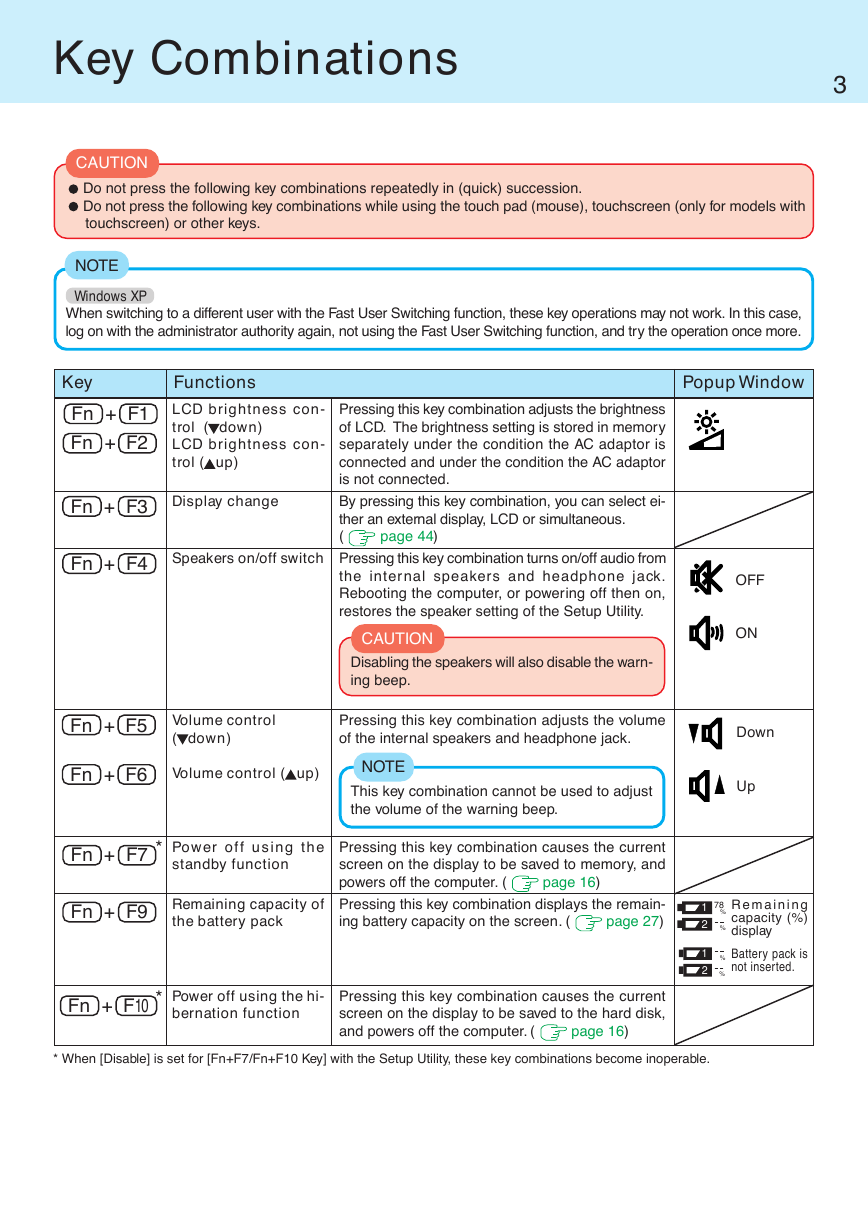
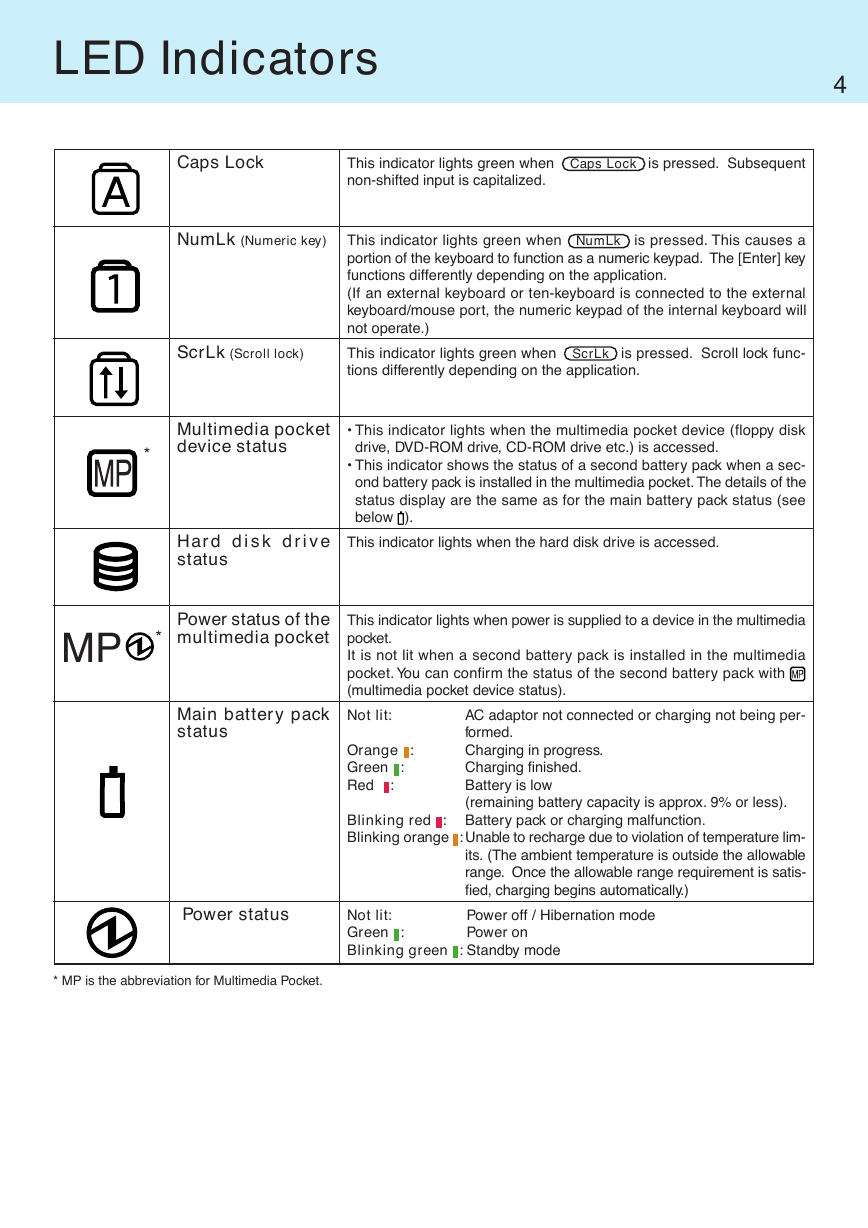
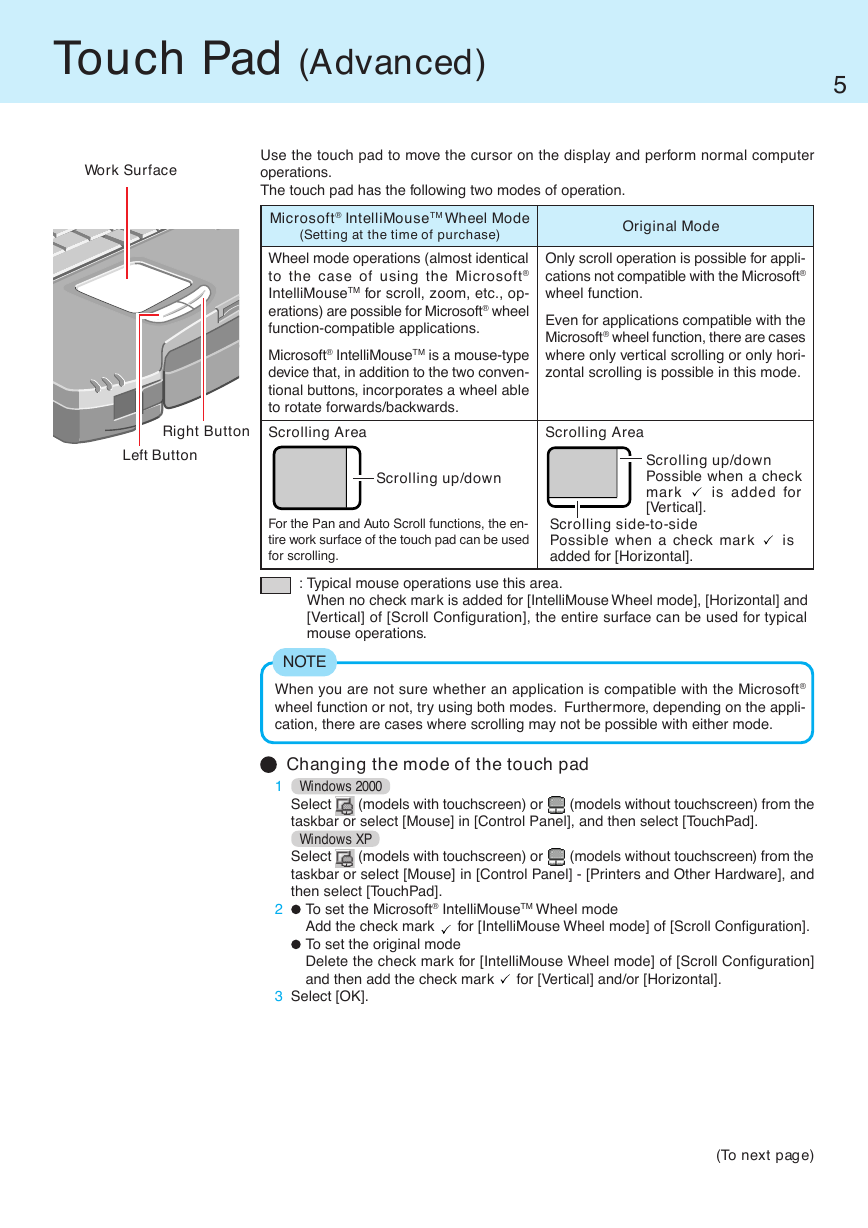
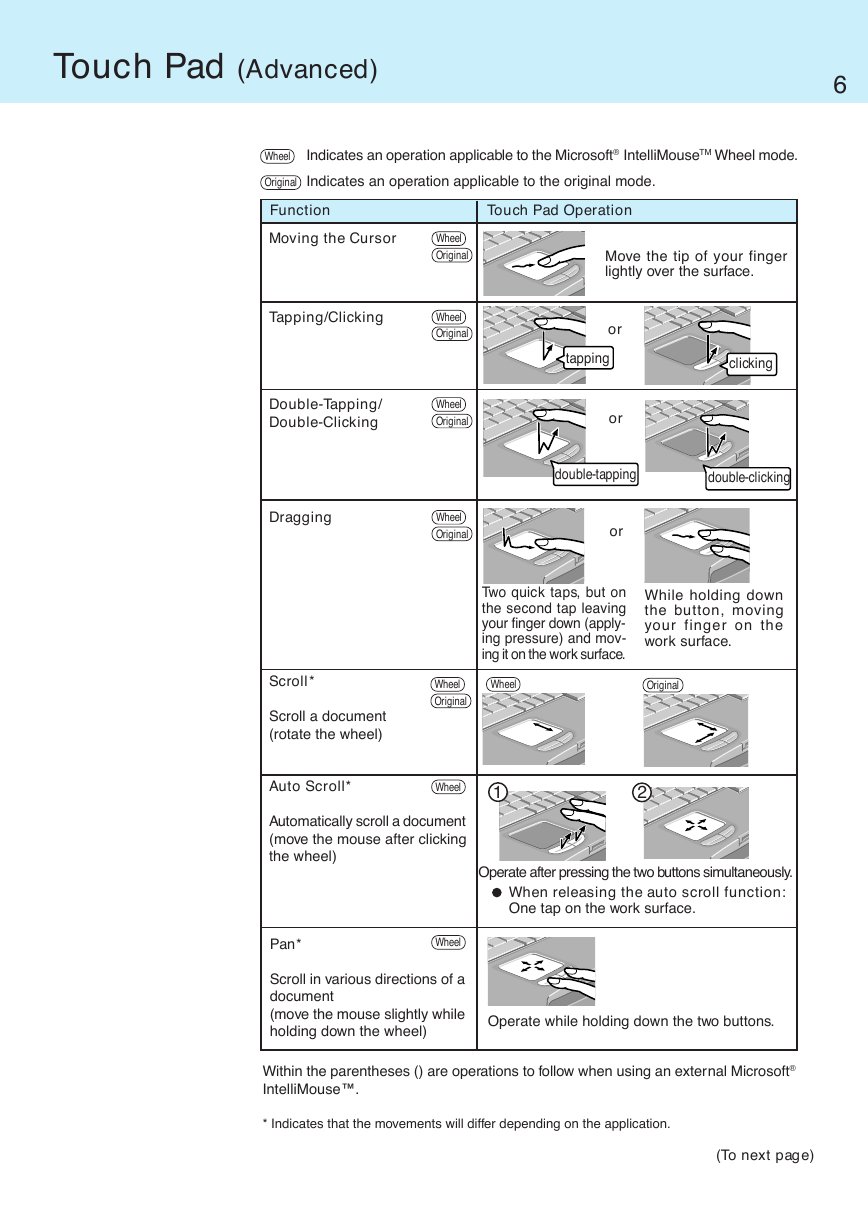
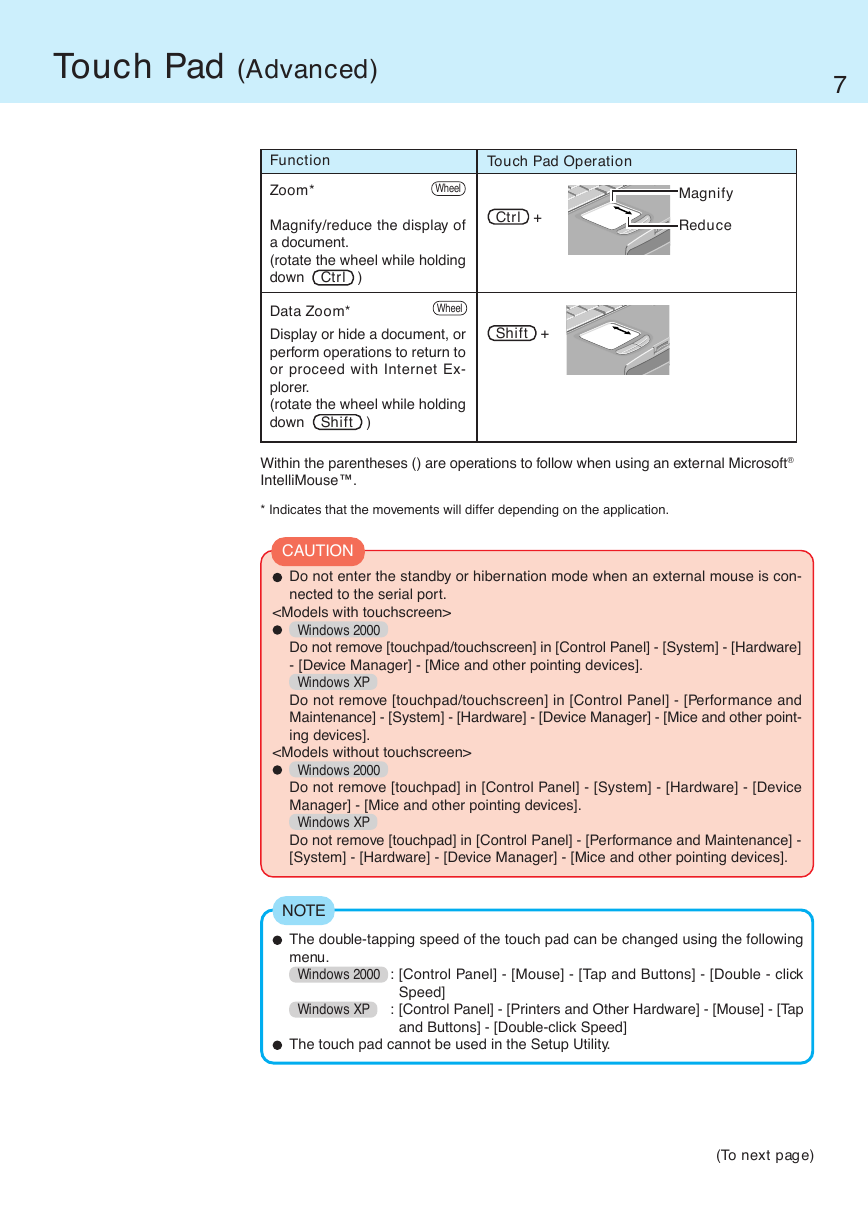
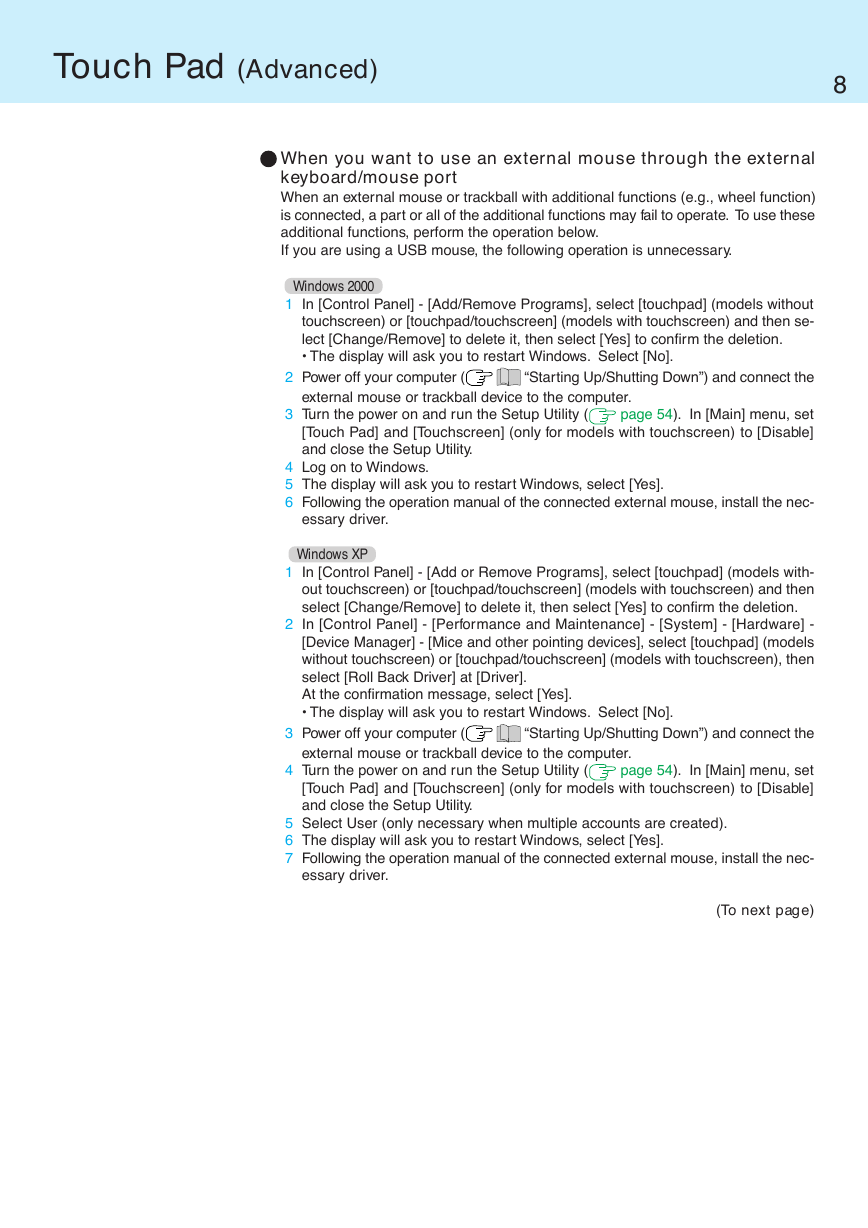








 2023年江西萍乡中考道德与法治真题及答案.doc
2023年江西萍乡中考道德与法治真题及答案.doc 2012年重庆南川中考生物真题及答案.doc
2012年重庆南川中考生物真题及答案.doc 2013年江西师范大学地理学综合及文艺理论基础考研真题.doc
2013年江西师范大学地理学综合及文艺理论基础考研真题.doc 2020年四川甘孜小升初语文真题及答案I卷.doc
2020年四川甘孜小升初语文真题及答案I卷.doc 2020年注册岩土工程师专业基础考试真题及答案.doc
2020年注册岩土工程师专业基础考试真题及答案.doc 2023-2024学年福建省厦门市九年级上学期数学月考试题及答案.doc
2023-2024学年福建省厦门市九年级上学期数学月考试题及答案.doc 2021-2022学年辽宁省沈阳市大东区九年级上学期语文期末试题及答案.doc
2021-2022学年辽宁省沈阳市大东区九年级上学期语文期末试题及答案.doc 2022-2023学年北京东城区初三第一学期物理期末试卷及答案.doc
2022-2023学年北京东城区初三第一学期物理期末试卷及答案.doc 2018上半年江西教师资格初中地理学科知识与教学能力真题及答案.doc
2018上半年江西教师资格初中地理学科知识与教学能力真题及答案.doc 2012年河北国家公务员申论考试真题及答案-省级.doc
2012年河北国家公务员申论考试真题及答案-省级.doc 2020-2021学年江苏省扬州市江都区邵樊片九年级上学期数学第一次质量检测试题及答案.doc
2020-2021学年江苏省扬州市江都区邵樊片九年级上学期数学第一次质量检测试题及答案.doc 2022下半年黑龙江教师资格证中学综合素质真题及答案.doc
2022下半年黑龙江教师资格证中学综合素质真题及答案.doc